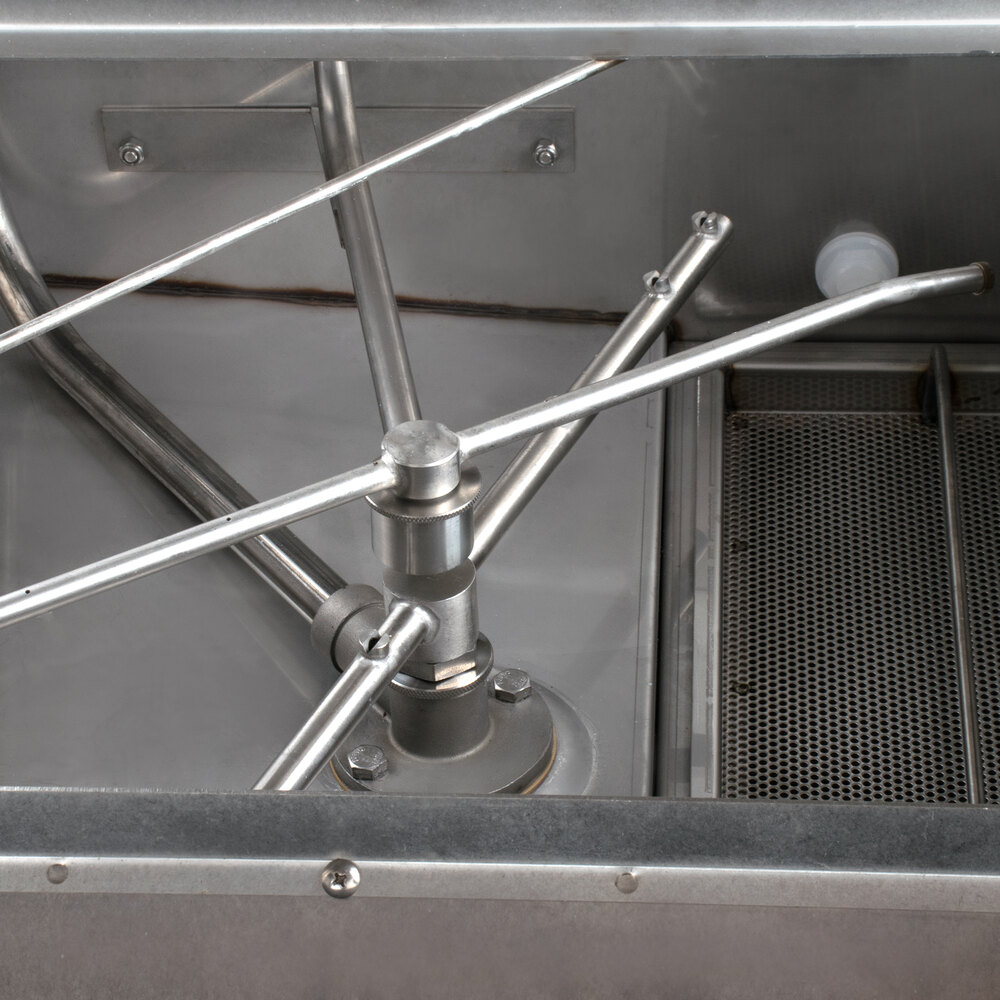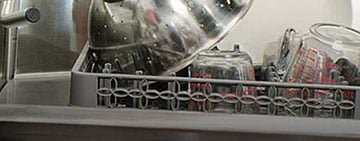
Spotless dishes start with a clean dishwasher. Throughout a busy shift, food debris and grease accumulate in the scrap basket, on the spray arms, and inside the wash tank. This affects the cleanliness of your dishes and can lead to clogs, leaks, and malfunctions. Regular cleaning helps prevent these issues, ensuring your dishwasher operates at peak performance. We'll walk you through the right procedure for cleaning your commercial dishwasher.
How to Clean a Commercial Dishwasher

Deep cleaning of your commercial dishwasher should be done at least once a month, depending on how often you use the dish machine and the water quality in your area. If your establishment experiences heavy use of the dishwasher or has hard water that leaves mineral deposits, more frequent deep cleaning may be necessary. Here's a step-by-step guide on what you'll need and how to clean your commercial dishwasher effectively:
Supplies Needed:
- Commercial-grade dishwasher cleaner
- Rubber gloves
- Safety goggles
- Soft-bristled brush or sponge
- Clean towels
- Hot water
1. Drain and Clean the Wash Tank
The wash tank works by filling with hot water mixed with detergent, which is then circulated by powerful jets or wash arms. Over time, food particles, grease, and detergent residue can accumulate in the wash tank, leading to decreased cleaning performance and potential hygiene issues. A dirty wash tank can also cause unpleasant odors and affect the taste and appearance of the dishes.
- Turn off the dishwasher and disconnect the power source.
- Remove any remaining dishes or utensils from the dishwasher.
- Drain the wash tank by following the manufacturer's instructions.
- Use a non-abrasive cleaner to clean the wash tank thoroughly, removing any food particles or residue.
2. Clean the Scrap Basket

This screen is typically located at the bottom of the dishwasher's wash tank and acts as a barrier to capture solid waste before it can cause blockages or damage to the dishwasher's internal components. As the dishwasher operates, the scrap screen collects food scraps, small utensils, and other debris that are washed off dishes and cookware. Over time, these particles can accumulate and lead to drainage issues, reduced water flow, and inefficient cleaning performance. Regularly cleaning the scrap screen is essential to maintain the dishwasher's functionality and prevent costly repairs.
- Remove the scrap basket from the dishwasher and empty it of any debris.
- Wash the scrap basket with soap and water to remove any remaining food particles.
- Ensure the scrap basket is completely dry before placing it back into the dishwasher.
3. Clean the Interior
A clean dishwasher not only ensures that dishes are sanitized properly but also helps maintain the quality of the wash cycle. By periodically scrubbing the interior of the machine, you can help keep the spray arms, racks, and filters free of debris, allowing water to circulate freely and ensuring that dishes come out clean and spot-free.
- Wipe down the interior of the dishwasher with a damp cloth to remove any dirt or grime.
- Pay special attention to the door gasket and edges where residue may accumulate.
- Use a commercial dishwasher cleaner to sanitize the interior of the machine.
4. Clean the Spray Arms

The spray arms work by receiving pressurized water from the dishwasher's pump and distributing it through the nozzles in a rotating motion. Food particles, mineral deposits, and detergent residue can build up inside the spray arms, leading to clogs and reduced water flow. This can result in poor cleaning performance, unsanitary dishes, and potential damage to the dishwasher itself.
- Remove the spray arms from the dishwasher according to the manufacturer's instructions.
- Inspect the spray arms for clogs or blockages and clean them thoroughly.
- Use a small brush or toothpick to remove any debris from the spray arm nozzles.
5. Reassemble and Air Dry the Machine
Allowing the dishwasher to air dry with the door open helps to prevent the growth of mold and mildew. These fungi thrive in damp, dark environments, and they can quickly develop if the interior of the dishwasher remains moist after cleaning cycles.
- Reassemble the dishwasher, ensuring all parts are securely in place.
- Leave the door open and allow the dishwasher to air dry completely before powering it back on.
Dishwasher Cleaning FAQ
We answer common dishwasher cleaning questions below:
Can I Just Use the Cleaning Cycle on My Dishwasher?
While routine cleaning cycles are effective for day-to-day maintenance, a deep clean by hand is recommended periodically to ensure thorough cleaning and prevent the buildup of stubborn residue. A deep clean involves manually scrubbing the interior surfaces of the dishwasher, including the wash arms, filters, and door gaskets, with a commercial-grade cleaner and a brush or scrub pad.
Is Deliming the Same as Cleaning?
Deliming or descaling is different from regular cleaning in that it specifically targets mineral deposits and scale buildup inside the dishwasher. While regular cleaning involves cleaning the exterior surfaces, filters, and racks of the dishwasher, deliming focuses on removing stubborn mineral deposits that can affect the machine's performance.
How to Delime a Dishwasher?
To delime your dishwasher, you can use a commercial deliming agent specifically designed to dissolve mineral deposits. Follow the manufacturer's instructions for the proper dilution and application method.
By prioritizing the cleaning and maintenance of your commercial dishwasher, you can uphold hygiene standards, prevent costly repairs, and optimize the efficiency of your kitchen operations. Regular cleaning is a small investment that yields significant returns in terms of cleanliness, performance, and equipment longevity.





